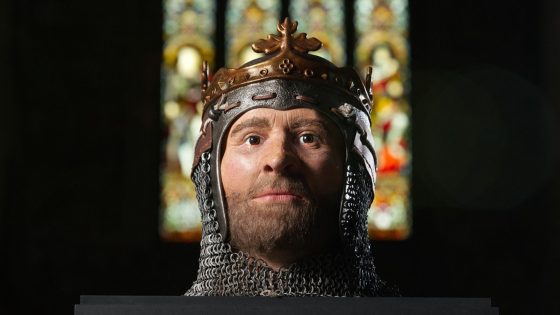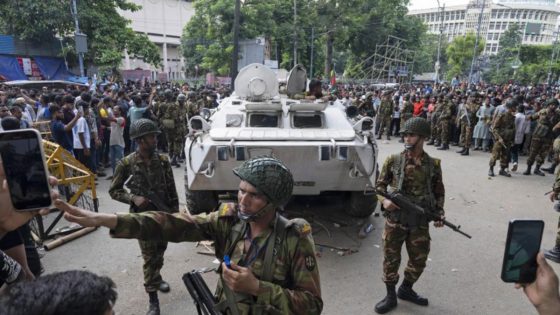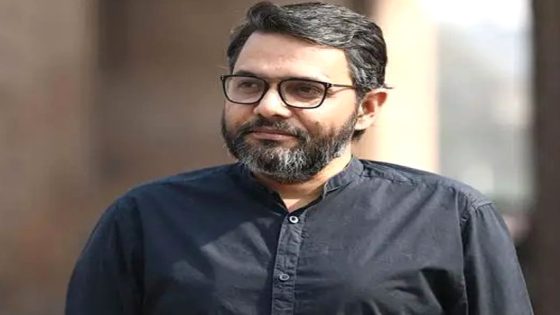A 3D model of Robert the Bruce has been unveiled to mark the 750th anniversary of the former king’s birth.
The reconstruction was produced from a cast of his skull, with Historic Environment Scotland (HES) describing it as the “most realistic” ever made.
Robert I, born on 11 July 1274, was King of Scots from 1306 to his death in 1329 at the age of 54.
He led Scotland during the First War of Scottish Independence against England.
A series of military victories between 1310 and 1314 won him control of much of Scotland, and at the Battle of Bannockburn in 1314, he defeated a much larger England army under Edward II to help restore the nation to an independent kingdom.
The 3D model will be on display at Dunfermline Abbey, where his body is buried, until Saturday 7 December.
It was created as part of a collaboration between the University of Glasgow and Liverpool John Moores University’s Face Lab.
HES said the model was produced using a combination of historical research and scientific analysis with advances in facial reconstruction techniques.
The team used a 3D laser scanner to scan the cast of his skull held at The Hunterian museum in Glasgow, which allowed the team to accurately establish the muscle formation from the positions of the skull bones.
Using CGI technology, realistically textured skin was then layered over the muscle structure.
The nose is said to be the least accurate feature of this facial depiction due to the bone deterioration.
Historians have long debated whether Robert the Bruce suffered from leprosy, so the team created two versions of the digital reconstruction – one with a mild representation of the disease and one without.
The 3D model was created showing no visible signs of leprosy.
Read more from Sky News:
Bullet hole could be proof of Bonnie Prince Charlie assassination attempt
Bonnie Prince Charlie’s face recreated using death masks
Dr Martin MacGregor, senior lecturer in history at the University of Glasgow, came up with the idea of producing a model following the discovery of King Richard III of England’s skeleton in Leicester in 2012.
Dr MacGregor said: “In a lifetime of only 55 years, Robert Bruce achieved the impossible and restored peace and freedom to a war-torn and colonised kingdom.
“Contemporary sources tell us much about his remarkable life, but virtually nothing about his appearance.
“This is what persuaded a team of historians, museum curators, geneticists, forensic scientists and medical artists to combine to create a new 3D depiction of the head of the hero king, based upon the skull cast taken from a skeleton in a tomb discovered within the ruins of Dunfermline Abbey in 1818.”
The head of the model is dressed in a helmet and topped by a crown, similar to one believed to have been worn by Robert the Bruce at the Battle of Bannockburn.
Dr MacGregor added: “It is fitting that Dunfermline Abbey, where Robert Bruce was buried in 1329, should host an exhibition which brings us face-to-face with Scotland’s greatest monarch.”
Source Agencies









